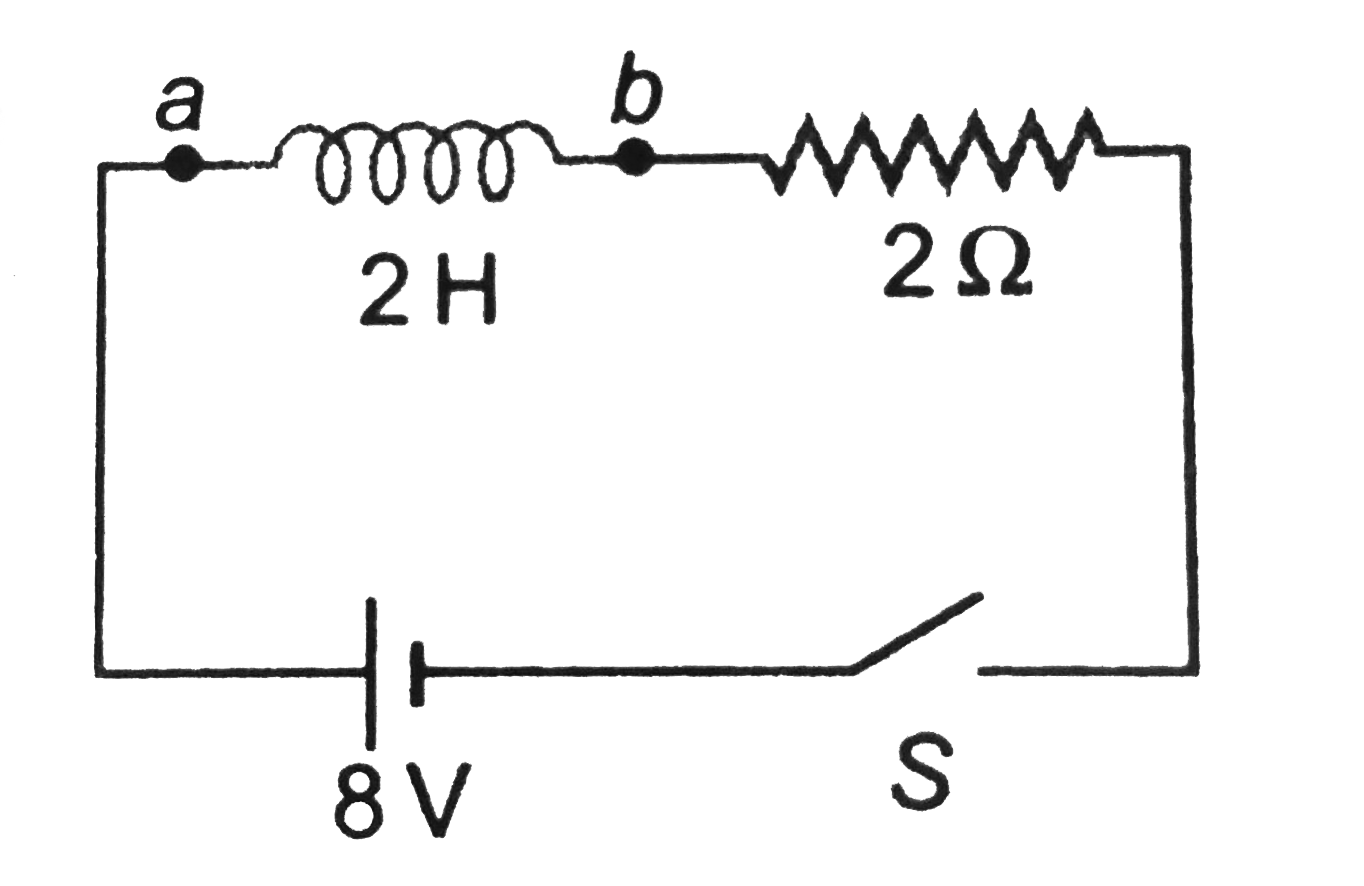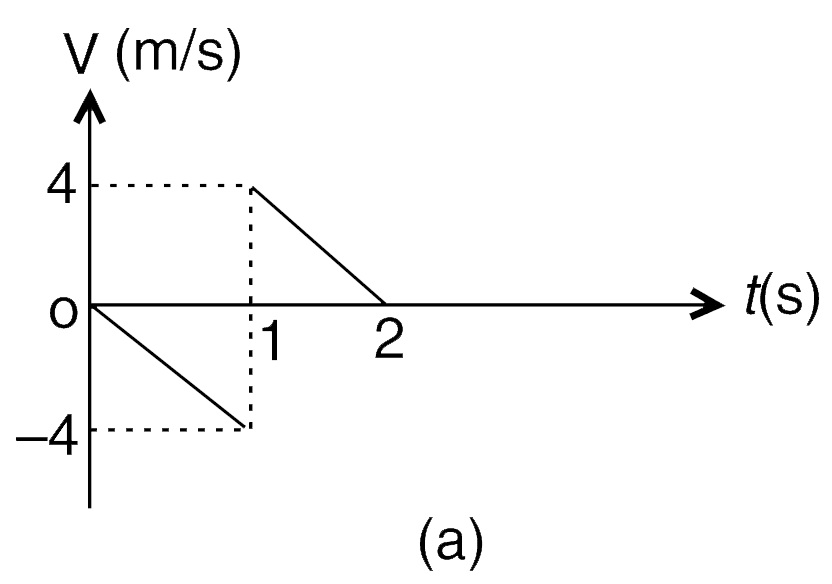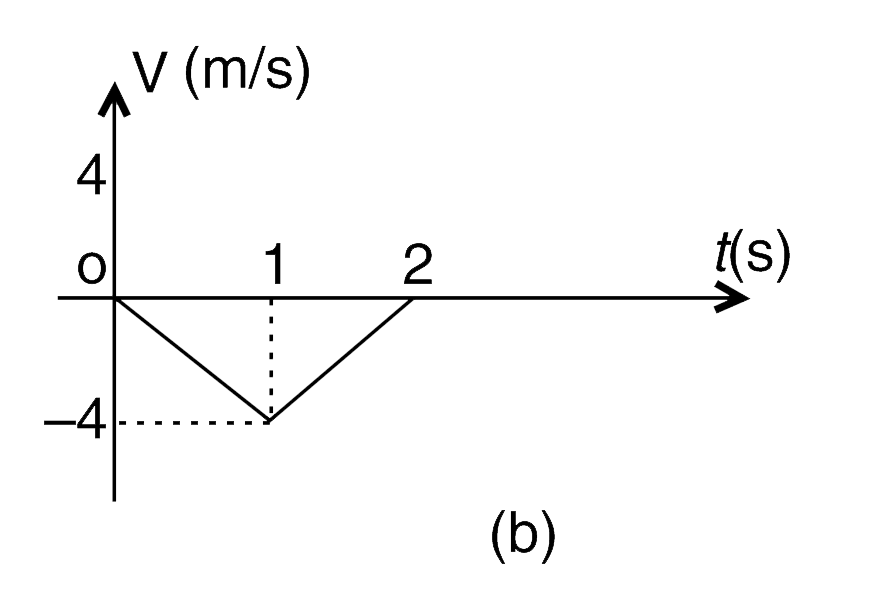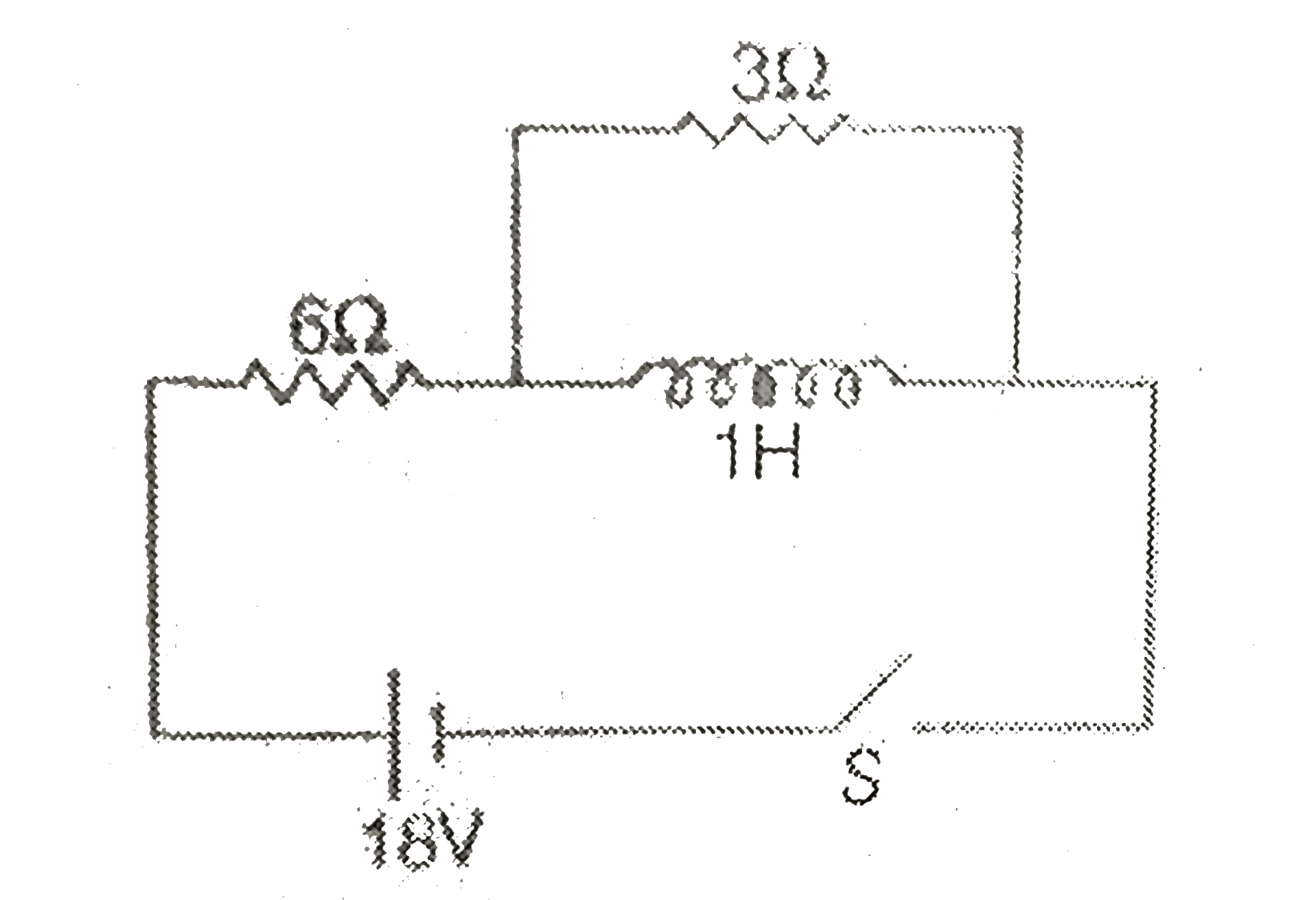In the figure shown q is in coulomb and t in second. At time t=1s

Va−Vb=4V
Vb−Vc=1V
Vc−Vd=16V
Va−Vb=20V
The correct Answer is:A, B, C
q=2t2
i=dqdt=4t
didt=4A/ss
At t=1s,q=2C,i=4A
and didt=4A/s
Va−Vb=Ldidt=1×4=4V
Vb−Vc=qC=22=1V
VC−Vd=ir=4×4=16V
Va−Vd is summation of above three i.e. 21V.
Topper's Solved these Questions
- ELECTROMAGNETIC INDUCTIONBOOK - DC PANDEYCHAPTER - ELECTROMAGNETIC INDUCTIONEXERCISE - Level 2 Comprehension Based
13 Videos
- ELECTROMAGNETIC INDUCTIONBOOK - DC PANDEYCHAPTER - ELECTROMAGNETIC INDUCTIONEXERCISE - SUBJECTIVE TYPE
1 Video
- ELECTROMAGNETIC INDUCTIONBOOK - DC PANDEYCHAPTER - ELECTROMAGNETIC INDUCTIONEXERCISE - Level 2 Single Correct
37 Videos
- CURRENT ELECTRICITYBOOK - DC PANDEYCHAPTER - CURRENT ELECTRICITYEXERCISE - Medical entrances gallery
97 Videos
- ELECTROMAGNETIC WAVESBOOK - DC PANDEYCHAPTER - ELECTROMAGNETIC WAVESEXERCISE - Sec C
22 Videos
Similar Questions
In the figure shown, F is in newton and t in seconds, Take g=10m/s2.
(a) Plot acceleration of the block versus time graph.
(b) Find force of friction at,t=2sandt=8s.

View SolutionIn the circuit as shown,the charge varies with time t as q=t3−4 ,where q is in coulombs and t is in seconds.Where at t=2, the potential difference between A and B,VA−VB in volts is
View Solution
Knowledge Check
In the circuit shown in figure q varies with time t as q=(t2=16). Here q is in coulomb and t in second.

Find Vabatt=5sA50 VB35.5 VC46.5 VD40.2 VIn the circuit shown in figure q varies with time t as q=(t2=16). Here q is in coulomb and t in second.

Find Vab=(Va−Vb)att=3sA−24.5VB18.5VC−25.5VD22.5VIn the circuit shown in figure, circuit is closed at time t=0. At time t=ln(2) second
 Arate of energy supplied by the battery is 16 J/sBrate of heat dissipated across resistance is 8J/sCrate of heat dissipated across resistance is 16 J/sDVa−Vb=4V
Arate of energy supplied by the battery is 16 J/sBrate of heat dissipated across resistance is 8J/sCrate of heat dissipated across resistance is 16 J/sDVa−Vb=4V
In the circuit shown, charge q varies with time 't' as q=t3−t2+4t, where q is in coulombs and time 't' is in second. Find VAB(VA−VB) in volts at time t=1 sec

View SolutionThe rate of flow of charge in a circuit is called electric current. In other words, it is the amount of charge flowing per second. It is denoted by the letter
I. If Q is the charge which is flowing through a conductor in time t, then current is given by i=Qt
Unit of current:
The S.I unit of current is ampere and it is denoted by the letter 'A'.
The S.I unit of Q is coulomb and that oft is second. Thus, the S.I unit of electric current is
1 coulomb1 second=1A
How much time is required for 10 coulombs of charge to flow past a point if the rate of flow (current) is 2 amperes?
View SolutionThe rate of flow of charge in a circuit is called electric current. In other words, it is the amount of charge flowing per second. It is denoted by the letter
I. If Q is the charge which is flowing through a conductor in time t, then current is given by i=Qt
Unit of current:
The S.I unit of current is ampere and it is denoted by the letter 'A'.
The S.I unit of Q is coulomb and that oft is second. Thus, the S.I unit of electric current is
1coulomb1 second=1A
How much current must there be in a circuit if 100 coulombs flow past a point in the circuit in 4 seconds?
View SolutionThe velocity (V) – time (t) graphs for two particles A and B moving rectilinearly have been shown in the figure for an interval of 2 second.
(a) At t=1s, which of the two particles (A or B) has received a severe blow?
(b) Draw displacement (X) – time (t) graph for both of them.


View SolutionIn the circuit shown in figure switch S is closed at time t=0

Current I from the battery at time t is given by
View Solution